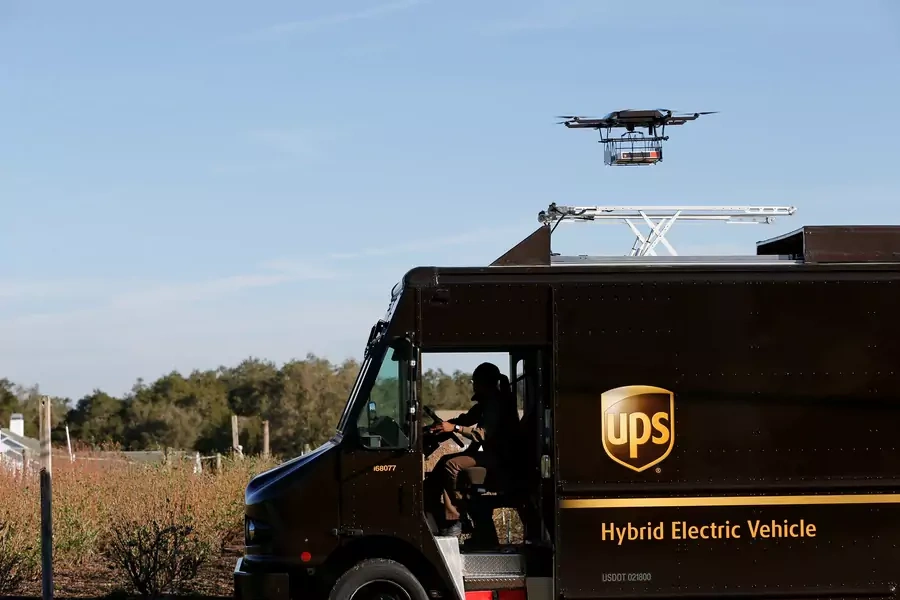Duck and Cover: the Danger of Drones as the Future of E-Commerce

More on:
Cathryn Shelton is a former intern at the Council on Foreign Relations. She is currently a research assistant at Project Connect, a non-profit working to eliminate the digital divide through mapping every school in the world and measuring their online connectivity. You can follow her @cathshelton_.
Drone delivery gets a lot of buzz these days. E-commerce companies, trade associations, international development agencies, and your next-door neighbor all marvel at the benefits the nascent industry could provide: jobs will be created; humanitarian aid will be revolutionized; a flying robot will bring you lunch as you ride a wave into shore, or a fresh tube of sunscreen as you play through the back nine.
In typical Silicon Valley fashion, the technological development of unmanned aerial vehicles (UAV) is unfolding at breakneck speed. The United Parcel Service (UPS) announced their capabilities in February, and Amazon recently released footage of its first public U.S. drone delivery. Chinese tech start-ups are hustling to get their drones in the game, and Japan just celebrated a world record for longest distance traveled by a carrier UAV.
Setting aside some of the Jetsons-like hype, tech companies and regulators face a series of hurdles before delivery drones take off. Current FAA regulation for commercial drone use requires drones stay within the pilot’s line of sight, severely limiting the range and application of drones. Updated Federal Aviation Administration (FAA) regulation for the commercial use of drones is three or four years away, and the technology that future technical standards might mandate in order to make sure commercial drones are safe has not been developed yet. For these reasons, experts predict e-commerce drones won’t be feasible until at least 2020. The good news is the slow pace of federal rule-making means that commercial drones have yet to litter our skies. The bad news: the lack of clear restrictions governing drones means that the environment will be more dangerous in the coming years.
Drone enthusiasts have uncorked a host of difficult surveillance and security issues. While mandatory geo-fencing technology that would keep drones out of sensitive areas like airports or nuclear sites is being fast-tracked in the United States and Europe, drones run into thorny issues even when they do not fly over Area 51. Indeed, drones on the toy market have already raised concerns regarding unwanted surveillance, with legal battles in recent years over appropriate UAV usage running the gamut of civil complaints, to reckless endangerment charges, to grand jury indictments. It is hard to imagine that expanding the use of UAVs for commercial purposes would do anything but exacerbate these issues.
On the privacy front, many toy drones are equipped with HD cameras that could be used to surreptitiously record someone in their home or yard. Flying a drone on someone else’s property could also fall within the definition of trespassing. Commercial drones zipping around country roads and city streets could open up companies to criminal charges and increase the risk of accidental surveillance if a commercial drone erroneously filmed something it wasn’t supposed to. There’s also the risk of intentional surveillance—not by the company operating the drone, but by potential threat actors that could spoof or hack UAV radio systems, just as they do computers.
Many of the privacy concerns are theoretical, but the safety concerns are not. A 2016 survey conducted by the United States Postal Service Office of Inspector General indicated that U.S. citizens are actually more worried about drone malfunction than misuse. While a camera drone falling out of the sky and hitting you on the head might be painful but not life-threatening, being hit by a drone carrying a heavy Amazon package could have more severe consequences.
Objects falling out of the sky isn’t the only concern. Terrorist groups could modify drones to deliver explosives, using UAVs as a new method to carry out attacks. A haywire drone could hit power lines, possibly jeopardizing electricity delivery. A commercial drone could stage an accidental attack on critical infrastructure all by itself.
Despite the range of concerns, UAV industry development is well underway. Companies like Amazon’s Prime Air are wasting no time trying to iron out the kinks of their drones’ performance-restricting battery life or cumbersome helipads. But before anyone green-lights the widespread roll out of drones as an upgrade for e-commerce, tech giants and lawmakers alike should take a deep breath, and ensure that their technological progress does not come at the expense of individual privacy and public safety.
More on:
 Online Store
Online Store